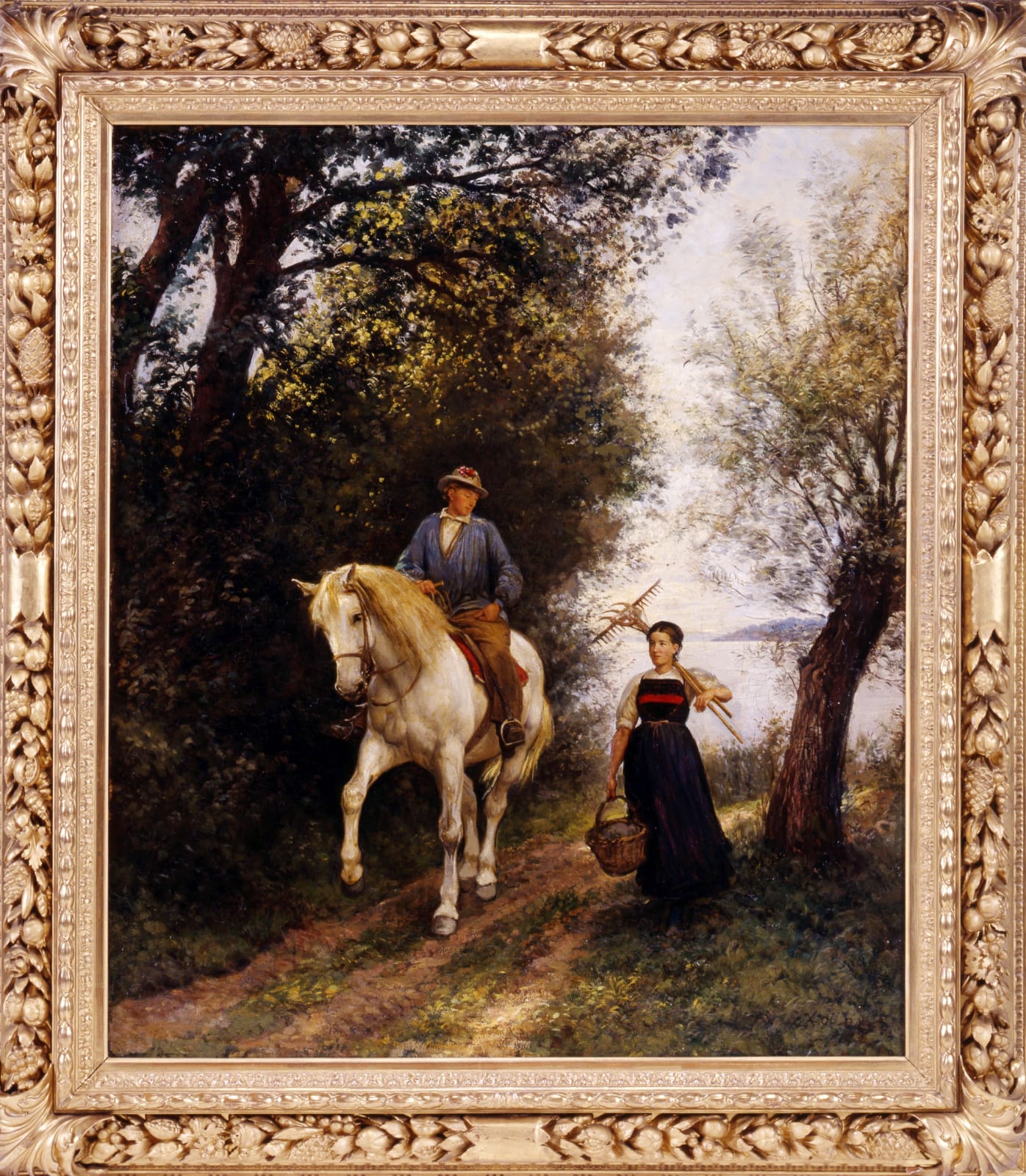Exhibitions
Zürich, Kunsthaus „Rudolf Koller Exhibition", 1897
Rudolf Koller (1828-1905)
"Knecht zu Pferd mit Bauernmädchen" Oil on canvas, signed
117cm x 100cm
The improved status of Swiss painting and painters during the second half of the nineteenth century owed much to Rudolf Koller. He was born in Zurich, where he also died. He initially studied in Zurich under Johann Jakob Ulrich. In 1846 Koller went to Düsseldorf to work in the studio of Carl Ferdinand Sohn (who soon after taught Koller's contemporary, Benjamin Vautier; see page 94). In 1847 Koller travelled to Paris where he shared a studio with Arnold Böcklin. Mter two years he moved to Munich where he worked with a group of artists, known as the 'Schweizer', led by the landscape painter
Johann Gottfried Steffan.
After much travelling abroad he returned to Zurich in 1851 and soon after completed a beautiful scene of a "Waterfall near Zurich" (Graphische Sammlung der Eidgenössischen Technischen Hochschule, Zurich). His subjects were generally pastoral views, featuring animals and farm workers within their natural landscape. Many of his works included animals, which Koller believed were to be treated with respect and represented the true and most dignified image of nature.
He combined realism with romantic overtones and was a master at devising classical compositions. In works such as "Cows in the Roman Countryside", 1869 (Kunstmuseum, Berne) his portrayal of animals compares with those by his great French contemporary, Rosa Bonheur (1822-99). Koller was also considered the contemporary counterpart to the seventeenth century Dutch master, Paulus Potter, whose paintings of animals was so highly regarded by nineteenth century artists.
From about 1870 Koller suffered problems with his eyesight, which forced him to raint less hut it rod not impede the quality of his work, as is evident in such magical works as "Horses at the Drinking Fountain, 1890 (Musée des Beaux Arts, Le Locle). As further evidence to the quality of his work, Koller continued to receive medals for his exhibited works at home and abroad. In addition to the collections already mentioned there are a number of his works at the Kunsthaus, Zurich and in the museums of Dresden, Basel, St. Gallen, Lausanne and Neuchatel.
